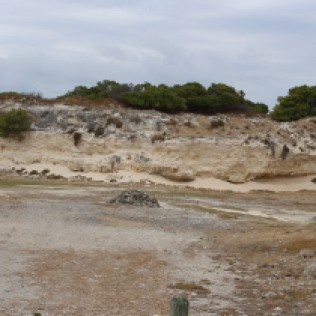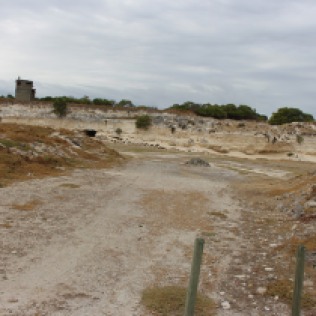We decided to leave a bit early and scope out the docks before catching our boat ride at 11am. Quickly we discovered that the Victoria and Albert (V&A) Waterfront is more than just a few piers. With over 450 shops, museums, restaurants and hotels and covering over 300 acres of the shoreline – a city within a city.
A dock by any other name.
In 1860, at 16 years old and as a then Midshipman in the Royal Navy aboard the HMS Euryalus, Prince Alfred became the first member of the Royal Family to visit the then named Cape Colony. He made such an impression that the first basin of the new Naval Yard was named after him with the second being named after his mother, Queen Victoria.
Nearly 160 years later and the current form of that same shoreline is now the most visited tourist site in Africa, and that includes Egypt’s Pyramids of Giza. Most of that credit goes to the designer – Adrian van der Vyver who has managed to blend colonial history with modern convenience in the most remarkable of settings – between the Atlantic and the Table Mountain.
But the docks were only a gateway to the real prize. Across Table Bay is a small island, roughly oval in shape and not that much bigger than Central Park in New York. It’s named after the Dutch word for ‘seal’ – one of its few inhabitants. In a normal world it would simply have been known for being the base of a one-time Whaling Station and as a leper colony and today would only be visited by scientists and nature lovers trying to catch a glimpse of the dwindling colony of African Penguins.
But we do not live in a normal world. This island has spent over 500 years as a prison island that has been home to Princes, Kings, Presidents of South Africa, Nobel Laureates, Indonesian political prisoners and poets and you will have heard of it before.
Harbour Crossing.
The Ferry Terminal is a hybrid of station and mini-museum that allowed us the opportunity to get stuck into the sad story of our destination.
We were fortunate to be on one of the newer boats so the crossing would only be 30 ‘exciting’ minutes as we cut through the waves. The older boats, that were previously used to transport prisoners and staff, took twice as long. Armed with a Lonely Planet Guide and wanting to ignore the boats lurching movements we dived into some of the early history of Robben Island.
The Dutch began the prison on the island in the mid-17th Century to isolate political leaders from around the Dutch Colonies. This included dignitaries such as the Kings of Ternate and Tidore (Maluka Islands) and their respective princes. As the colony grew the Dutch increasingly sent slaves and normal convicts to the island. An interesting story to come out of this was in 1690 when one of those convicts, by the name of Jan Rykman, successfully escaped the island by swimming to the mainland. That’s a 7.5km swim in open “freezing” sea water and dodging all manner of sharks.
Today that feat is marked by the annual Cadiz Freedom Swim in which many participants try to match the earlier feat of Jan Rykman.
The British then took over as gaolers in the 1800s and began sentencing leaders of the Xhosa to imprisonment after a series of uprisings (See Xhosa Wars). One of their leaders, Makanda Nxele drowned whilst trying to escape the island in a repeat of Jan Rykman’s earlier feat.
After that it was used as a Leper Colony before the darkest pages of its history began from the 1960s with its use as a maximum security prison for political prisoners by the then Afrikaans Government.
Bus Holiday
We arrived off the boat in dreary conditions and before being able to make sense of our surroundings we were collected and put onto an old bus. The majority of the tour, we would find out would be from inside that bus. Our guide was friendly and warm and spent the first 15 mins whilst we parked at the harbour with the usual patter; “Anyone here from Germany?” –small applause, “Anyone here from England” – polite applause. Karen decided to point me out me when he asked about Ireland and John of course shouted my lungs out in response.
‘Warmed Up’ we began our tour by driving straight past the prison and towards the other side of the island. Our first stop was outside a collection of four buildings, surrounded with wire and which had a long series of kennels outside it. These former barracks buildings were the personal prison of Robert Sobukwe for 6 years. Sobukwe was the leader of a political group called the Pan African Congress (PAC) and was deemed so dangerous to the Government that they enacted the “Sobukwe Clause” to keep him in permanent isolation. He was also not allowed to communicate with the other prisoners who were based in the Maximum Security Prison up the road.
Sobukwe would look out on those prisoners as they walked from the prison to the nearby Limestone quarry, and use signals and gestures to speak to them. One of the common gestures was to pick up a handful of earth and to allow it to slowly fall back to the ground. That quarry was to be our next stop. It was here that the authorities tried to break the spirits of the political prisoners among the rocks and cliffs. As we looked out of the bus window John was instantly brought back to his 18 year old self. Sitting on his bed and reading Nelson Mandela’s Long Walk to Freedom where Mandela described the quarry as their “University”. There amidst the brutality and humility of the guards and the harsh work the prisoners exchanged ideas, and taught one another subjects ranging from art to geography, mathematics to foreign languages.
In the middle of a quarry is a makeshift cairn of stones. This is called isisvane and was created by Mandela and other prisoners during a reunion visit to the island in 1995 as a tribute to the daily life and hard work endured by the political prisoners.
We quickly drove past a small church on our left, the Church of the Good Shepherd that was built in 1895 by the same man who build Archbishop Tutu’s cathedral in Cape Town – Sir Herbert Baker. The church was built for the leper colony.
Intermission
We spent 20 minutes break at the former pump station – Alpha 1, which now serves as a cafe. The rain had started coming in fast and we could see mist covering Table Mountain in the distance. There was also a Penguin nesting ground nearby so we got some photos of them.
Behind us, atop Minto Hill was the Robben Island Lighthouse. Completed in 1865 and seen as a drastic improvement over the previous system of bonfires this was crucial in keeping ships away from the hazardous waters around the south of the island. But not all ships paid heed and just up the road we could also see the wrecked carcass of Fong Chung II shipping vessel that ran aground in the 1970s. Just one of 31 known shipwrecks around the island.
Back where we started
After about an hour we had made our way back to the prison and this time we were allowed to get off the bus and walk around. Next to the prison was a small mosque – the Moturu Kramat, a sacred site for Muslim pilgrimage on Robben Island and was built to commemorate Sayed Abdurahman Moturu, the Prince of Madura. Moturu, who was one of Cape Town’s first imams, was exiled to the island in the mid-1740s. He died there in 1754. Muslim political prisoners would pay homage at the shrine before leaving the island.
At the entrance gate we were met by a former prisoner. He was to be our guide as we entered the prison complex through the side door of one of the 4 H-Blocks. and were shown into one of the general cells. These general cells were like a dormitory with beds on either side of the room. Unlike a dormitory however the occupants for so many years were prisoners – 52 of them in a room where it felt crowded with 40 tourists just visiting. We were asked to sit down on the benches as our guide spoke at lengths to us about the conditions in the prison, the day to day minutiae of prison live, the meals (if one could call them such) and some less savoury topics such as the surveillance of prisoner conversations and the forced sterilisation of male prisoners using a chemical mixed with milk.
After the talk we were taken to the isolation cells and walked down a long corridor until we stopped in front of the 10th cell on our right. The isolation cells were used mainly for political prisoners from Section B and this was the cell that belonged to Nelson Mandela.
And with that last connection to the past our tour and visit to Robben Island was finished.
Epilogue
It felt really important to visit Robben Island when we were in Cape Town. Like a pair of star-crossed lovers, Nelson Mandela and Robben Island are inseperable. To understand his life and struggle you had to see where a large part of it happened.
However that legacy is somewhat tarnished but the “quality” of the tour. We spent more time on a boat and bus then anything and what should have been the focal point of the tour, the prison , felt more like the gift shop you have to leave by.
Instead of walking around Robert Sobukwe’s House, maybe reaching down to the earth and picking some up only to drop it again in silent testimony to a great man we had to jostle for position to get a photo out the window. Our 20 minute break would have been better spent walking around the limestone quarry or in the main town rather then at a random shop.
We felt more of a connection when we visited S-21 in Phnom Penh or Fremantle Prison.


















































[…] had spent a few days in Cape Town. Visited Robben Island and it’s prison. Immersed ourselves in the Kruger and it’s wildlife and had some nice […]
LikeLike
[…] a few days in Cape Town learning about the struggle against apartheid. We had grabbed a ferry to Robben Island to visit where Nelson Mandela had spent 27 years in prison, and we had just spent the day in Soweto […]
LikeLike
[…] as the main British choice for Naval Defence it was also the same types that we encountered on Robben Island during our visit to South […]
LikeLike